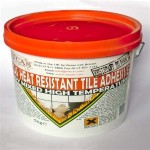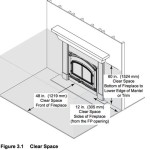Best Way to Mount a TV Above a Fireplace
Mounting a television above a fireplace is a popular design choice that can create a visually appealing focal point in a living room. However, it's a project that necessitates careful planning and execution to ensure both the safety of the equipment and the structural integrity of the wall. This article will explore the optimal methods for mounting a TV above a fireplace, considering crucial factors such as heat exposure, viewing angles, and cable management.
Assessing the Suitability of the Fireplace Location
Before beginning any mounting project, a thorough assessment of the fireplace's suitability is critical. Not all fireplaces are conducive to safely hosting a television above them. Several key factors must be considered:
Firstly, the type of fireplace plays a significant role. Gas fireplaces generally produce less heat than wood-burning fireplaces. Excessive heat can damage the television's internal components, shorten its lifespan, and even void the warranty. Therefore, it is imperative to measure the surface temperature above the fireplace when it is operating at its highest setting. A safe operating temperature for most televisions should be below 100 degrees Fahrenheit. If the temperature exceeds this limit, alternative mounting locations should be considered. Using a surface thermometer or an infrared thermometer can provide accurate readings.
Secondly, the depth of the mantel, if present, is a critical consideration. A sufficiently deep mantel can deflect a significant amount of heat away from the television. The deeper the mantel, the greater the protection it provides. However, even with a mantel, temperature monitoring is still necessary to ensure that the television remains within its safe operating range.
Thirdly, the construction of the wall above the fireplace must be evaluated. Identifying the wall's framing is crucial for secure mounting. Common framing materials include wood studs and metal studs. Older homes may have unique framing configurations that require specialized mounting techniques. Using a stud finder is essential to locate the studs accurately. For plaster walls, it may be necessary to drill pilot holes to confirm the location of the underlying studs. Avoiding mounting the television solely on drywall is paramount as drywall anchors alone are generally insufficient to support the weight of a television, especially larger models.
Finally, consider the availability of electrical outlets and cable connections. Ideally, electrical outlets and cable conduits should be pre-existing behind the intended mounting location. If they are not present, professional installation of these connections is highly recommended to avoid unsightly wires and potential electrical hazards. Running cables through the wall requires careful planning and adherence to local building codes. Using a fish tape can aid in guiding cables through the wall cavity. Always disconnect power before working with electrical wiring.
Selecting the Appropriate Mounting Hardware and Tools
Choosing the right mounting hardware is paramount for a secure and aesthetically pleasing installation. The selection process must consider the television's weight, size, and VESA (Video Electronics Standards Association) mounting pattern.
The VESA mounting pattern is a standard that specifies the distance between the mounting holes on the back of the television. This pattern is typically expressed in millimeters (e.g., 200x200, 400x400). The television's specifications will indicate its VESA mounting pattern. The chosen mount must be compatible with this pattern. Using the wrong VESA pattern can lead to an unstable and potentially dangerous installation.
There are several types of TV mounts available, each offering different features and benefits. Fixed mounts are the simplest and most affordable option, providing a flush-to-the-wall installation. Tilting mounts allow for vertical adjustment of the viewing angle, which can be beneficial when mounting the television higher than eye level. Full-motion mounts, also known as articulating mounts, offer the greatest flexibility, allowing for both vertical and horizontal adjustment, as well as extension away from the wall. The choice of mount depends on the desired viewing experience and the specific needs of the installation.
The weight rating of the mount is a critical factor. The mount must be rated to support at least the weight of the television. It is advisable to choose a mount with a weight rating that exceeds the television's weight by a significant margin to provide a safety buffer. Overloading the mount can lead to failure and potential damage to the television and surrounding area.
In addition to the mount itself, other essential tools and materials include a stud finder, a level, a drill with appropriate drill bits, a screwdriver, a measuring tape, a pencil, safety glasses, and cable management solutions. A stud finder is used to locate the wall studs for secure mounting. A level ensures that the television is mounted straight. A drill is used to create pilot holes and secure the mount to the studs. A screwdriver is used to tighten the mounting screws. A measuring tape is used to accurately position the mount. A pencil is used to mark the mounting locations. Safety glasses protect the eyes from debris. Cable management solutions, such as cable ties and cable sleeves, help to organize and conceal the cables.
Executing the Mounting Process with Precision
The mounting process requires meticulous attention to detail and adherence to safety precautions. Incorrect installation can result in damage to the television, the wall, or even personal injury.
The first step is to precisely locate and mark the wall studs using a stud finder. The stud finder should be calibrated according to the manufacturer's instructions to ensure accurate readings. Mark the center of each stud with a pencil. It is recommended to verify the stud locations by drilling small pilot holes. This can help to avoid misidentification of the studs.
Next, attach the mounting brackets to the back of the television, ensuring that they are aligned with the VESA mounting pattern. Use the appropriate screws provided with the mount. Tighten the screws securely, but avoid over-tightening, which can damage the television's housing. Refer to the television's manual for specific torque recommendations.
Position the mount on the wall, aligning it with the marked stud locations. Use a level to ensure that the mount is perfectly level. Mark the locations of the mounting holes on the wall through the mount's mounting plate. Pre-drilling pilot holes is very important. The pilot holes should be slightly smaller than the diameter of the lag bolts or screws that will be used to secure the mount to the wall. Insert the lag bolts or screws through the mount and into the pilot holes. Tighten the bolts or screws securely until the mount is firmly attached to the wall. Again, avoid over-tightening.
Carefully lift the television and attach it to the mounted bracket. Ensure that the brackets are securely engaged. Some mounts have a locking mechanism to prevent the television from accidentally dislodging. Secure any locking mechanisms according to the manufacturer's instructions. Double-check that the television is level and properly aligned.
Finally, manage the cables to create a clean and organized appearance. Use cable ties or cable sleeves to bundle the cables together. Conceal the cables behind the television or run them through the wall using cable conduits. Avoid leaving loose or dangling cables, which can be unsightly and potentially hazardous. Consider using a paintable cable channel to conceal cables that cannot be run through the wall. Ensure that the cables are not under excessive tension, which can damage the connectors.
After completing the installation, thoroughly test the television to ensure that it is functioning properly. Verify that all connections are secure and that the picture and sound are clear. Monitor the temperature above the fireplace while it is in operation to ensure that it remains within the safe operating range for the television.

Can I Mount My Tv Above The Fireplace

Everything You Need To Know About Tv Mounts For Fireplaces

Can I Mount My Tv Above The Fireplace

Safely Mount A Tv Above An Electric Fireplace Touchstone Home S Inc

3 Alternatives To Mounting Your Television Above The Fireplace Avs

How To Hang A Tv Over Fireplace

ᑕ❶ᑐ What To Consider Before Mounting A Tv Above Fireplace

How To Mount A Tv Over The Fireplacebeautifully Old Barn

Can I Mount A Tv Over My Fireplace Forshaw Of St Louis

Tv Wall Mount Installation With Wire Concealment Over Fireplace
Related Posts








